
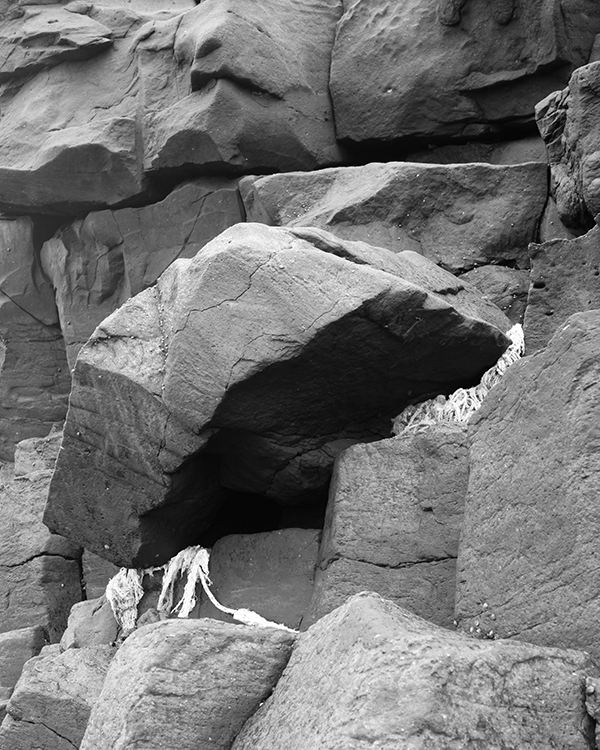
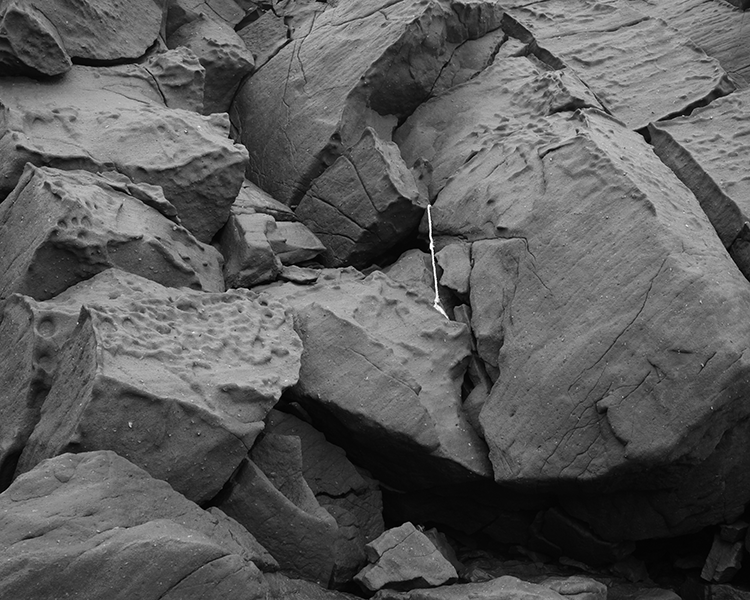
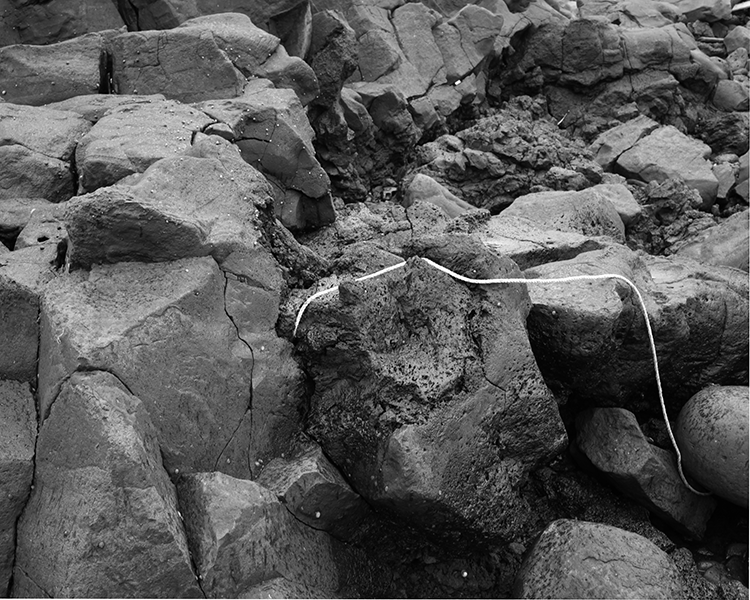
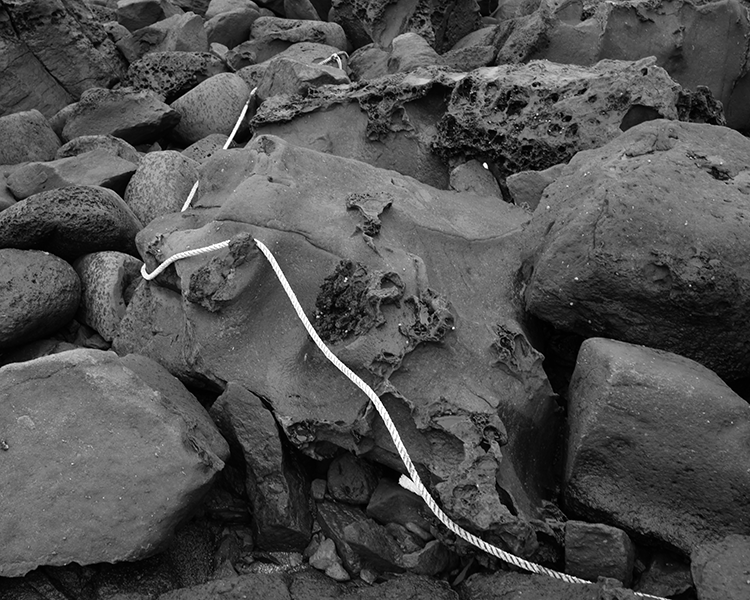
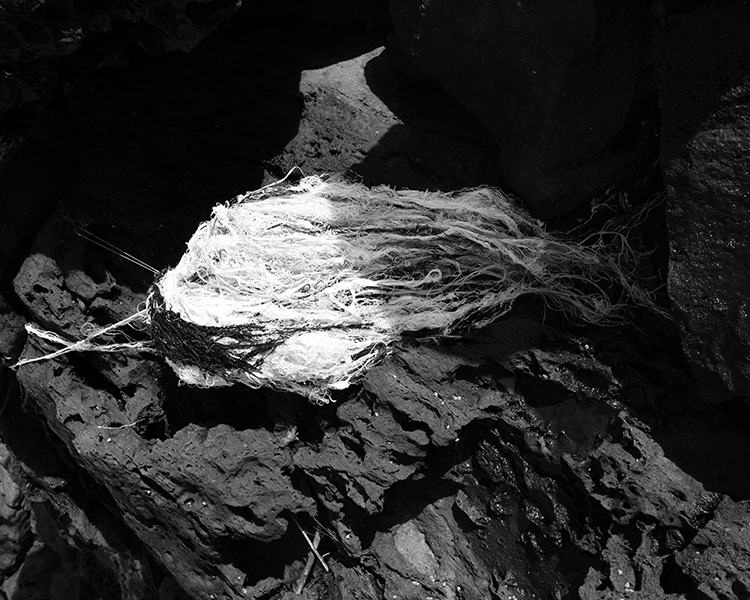
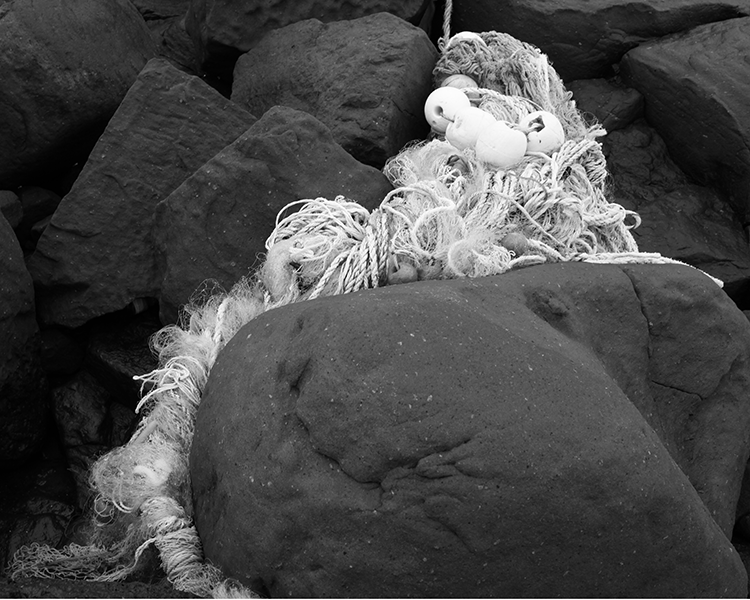
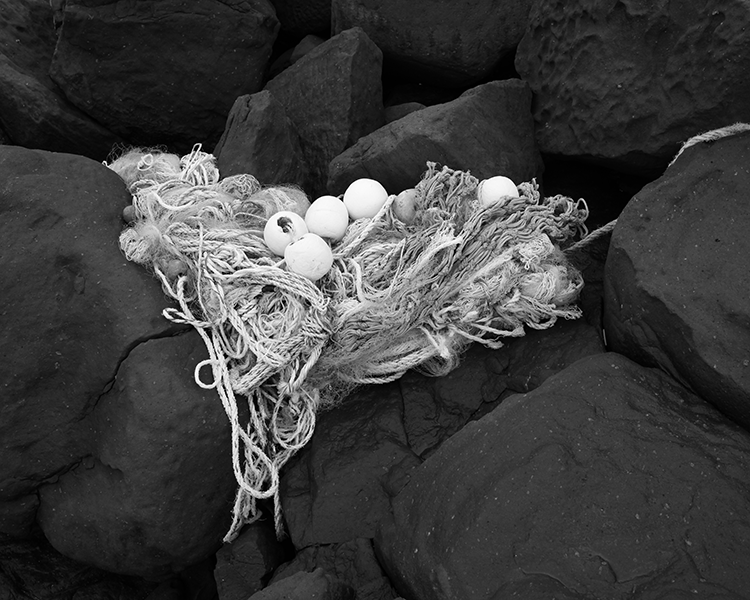
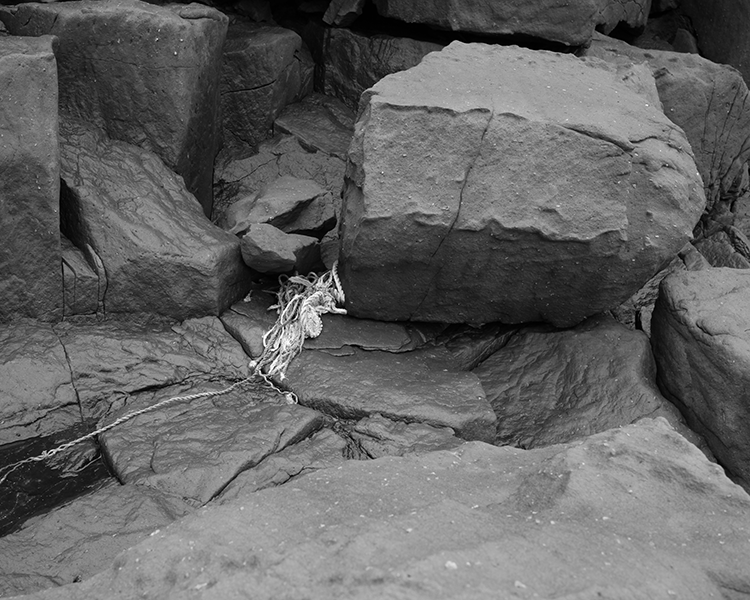
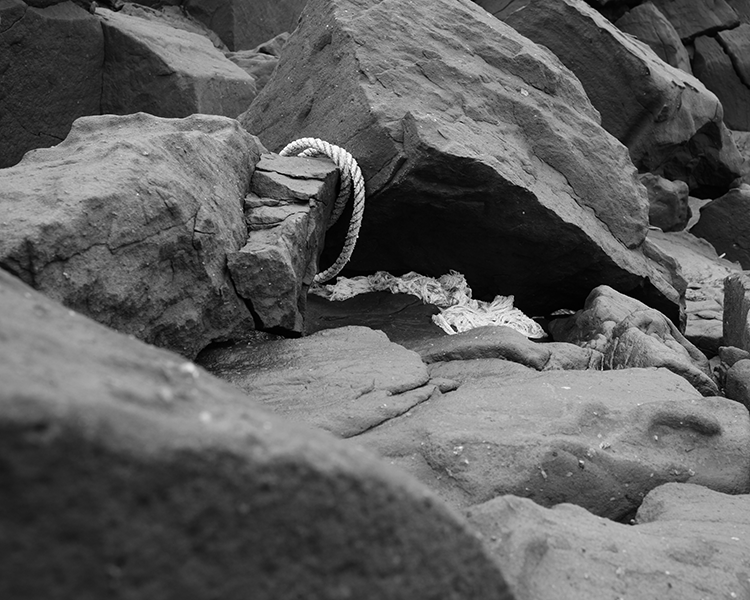
Humans, a creature on Earth, have lived in conformity with nature. However, at some point, humans are living a life that undermines nature as an object of conquest. It was tolerated and taken for granted to damage the environment to achieve economic growth through economic development. In 1987, the World Environmental Development Committee used the term "sustainable development" to call for development while considering the environment of future generations. This work can be said to have been born out of concerns about 'sustainable development'. As an object of the process of damaging nature to be protected, it is intended to be implemented through ropes across rocks. The irony created by the appearance of a human-used and abandoned rope being pushed into the waves and stuck in the rock son-in-law was captured and photographed. It can be said that it symbolizes the appearance of modern people who lost their direction to move forward and hit their bodies in time.
It was named "Gyeol-bak (縛)" as the title of the exhibition. In the Korean dictionary, bind refers to "bundling arms or legs so that the body cannot move freely." But I put a comma in the middle. The texture symbolizes the pattern, the gourd (縛) represents tying, and the tie represents the beauty created by tying the pattern.
결. 박(縛)은 두 번째 프로젝트의 연장선에서 이루어 지는 작업이다. 지구의 한 생물인 인간은 자연에 순응하면서 살아왔다. 그러나 어느 순간 인간은 자연을 정복의 대상으로 여기면서 훼손하는 생활을 영위하고 있다. 경제개발을 통해 경제 성장을 이루기 위해 환경을 훼손하는 것은 용인되고 당연시했다. 1987년 세계 환경 개발 위원회에서는 ‘지속 가능한 발전sustainable development’이라는 말을 사용하면서 미래세대의 환경을 생각하면서 개발할 것을 요구하고 있다. 이번 작업은 ‘지속가능한 발전’에 대한 고민에서 탄생한 작업이라 할 수 있다. 보호해야 할 자연이 훼손되는 과정에 대한 대상으로 바위에 걸쳐진 밧줄을 통해 구현해 보고자 한다. 인간이 사용하고 버려진 밧줄이 갈 곳을 잃고 파도에 밀려와 바위 사위에 껴있어서 갈 곳을 잃고 정착한 모습이 만들어내는 아이러니는 포착하고 사진으로 담았다. 자신이 나아 갈 방향성을 상실하고 시간에 몸을 맞긴 현대인의 모습을 상징하고 있다고 할 수 있다.
전시제목으로 결.박(縛)이라 이름 붙였다. 한글 사전에서 결박은 ‘몸을 자유롭게 움직이지 못하도록 두 팔이나 다리를 묶음’을 나타낸다. 그러나 그 중간에 쉼표를 넣었다. 결은 무늬를 상징하고 박(縛)은 묶여짐을 나타내고, 결박은 무늬가 묶여서 만들어낸 아름다움을 표현한 것이다.
